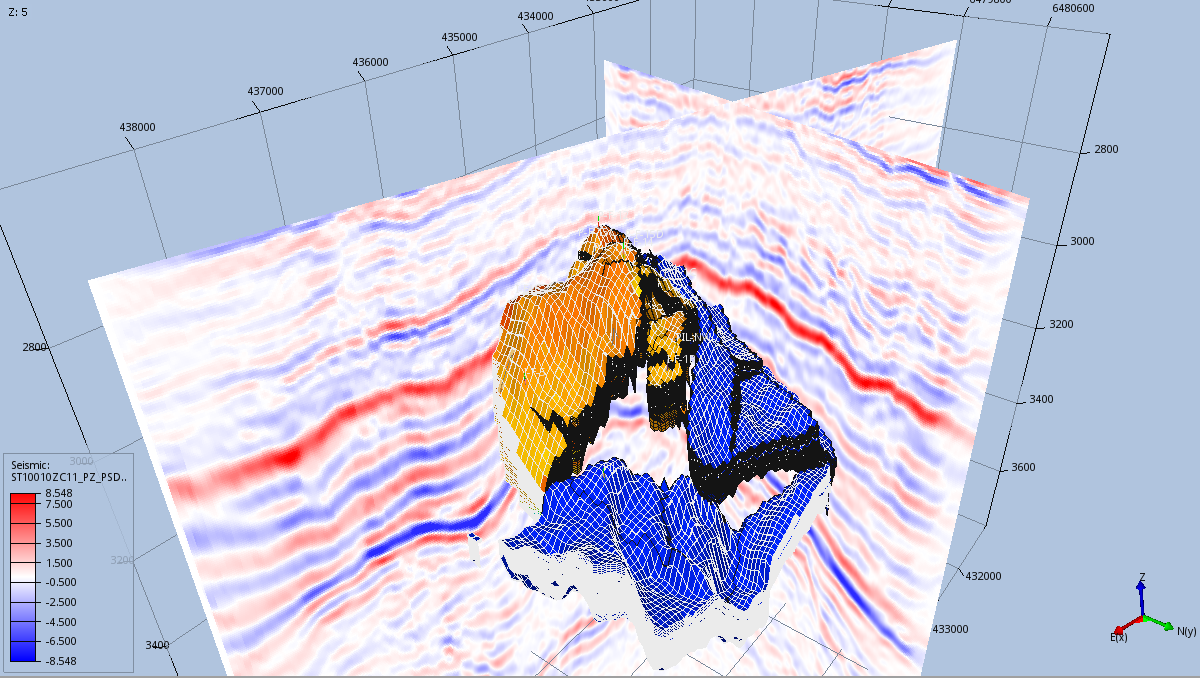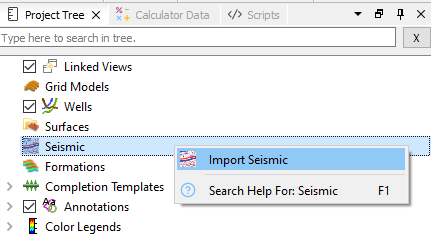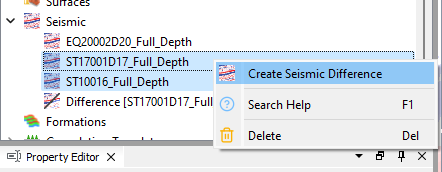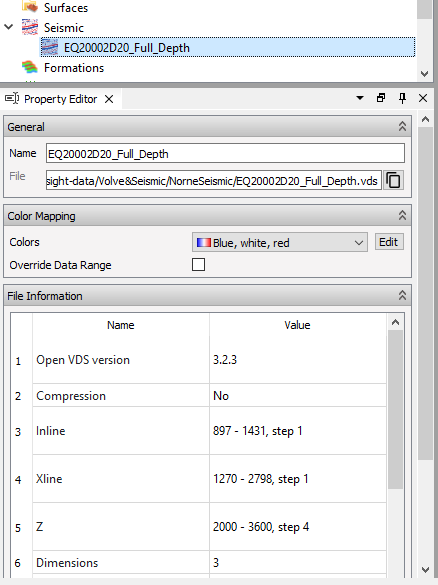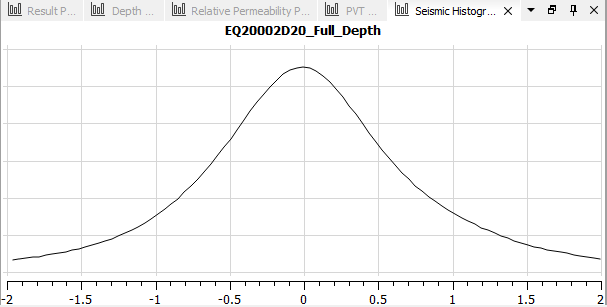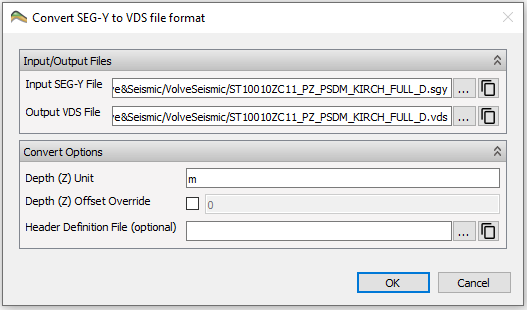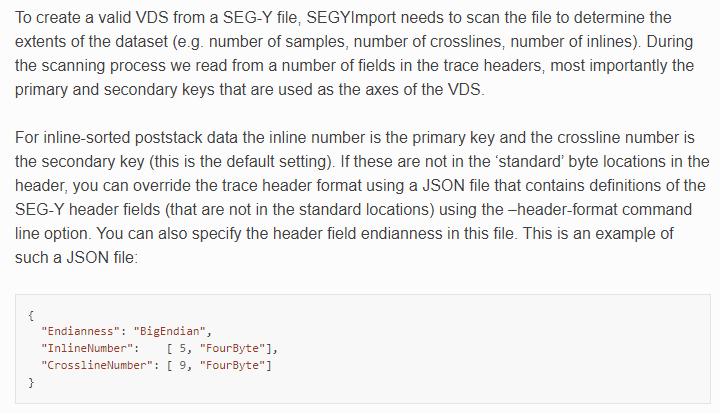Seismic Data
Importing Seismic Data
ResInsight supports the following seismic file formats:
- SEGY: file format developed by the Society of Exploration Geophysicists for storing geophysical data
- VDS: file format for fast random access to multi-dimensional volumetric data as supported by OSDU OpenVDS
- ZGY: file format for fast random access to multi-dimensional volumetric data as supported by OSDU OpenZGY
A seismic file is imported by right-clicking the Seismic item in Project Tree or by using menu item File->Import->Import Seismic.
To look at seismic data, create a Seismic View. Combined display of both grid model geometry and seismid data is described in Seismic Sections.
Difference Cube
The difference between two seismic cubes can be created using the following workflow:
- Select two seismic cubes with identical geometry (same count of XLines and Inlines located at identical geometrical locations)
- From the right-click menu select “Create Seismic Difference”
- A new seismic data source is created, and data can be mapped onto seismic intersections
Property Editor
The Property Editor for seismic data lists the available properties:
- General: Name and file for fast random access
- Color Mapping:
- Colors: Color Legend applicable to all Seismic Sections using this data set
- Override Data Range: option to override data range by specifying clip value, c.f. below
- File Information: key information such as ranges and data channels
To improve visualization of seismic data, the data range can be overridden by checking Override Data Range and specify Clip Value.
The Seismic Histogram may provide valuable information for deciding how to map the data values to colors.
- Clip Value: Defines the maximum and minimum value for color legend
- Mute Value: All values below the specified threshold is set to zero
Conversion of SEGY files for fast random access
ResInsight converts SEG-Y files to VDS to obtain fast random access.
Selecting a SEG-Y file (*.sgy, *.segy) thus triggers the Convert SEG-Y to VDS file format dialog shown below.
The options for conversion of SEG-Y files are:
- Input/Output files: specifying path and file name of input SEG-Y and output VDS file
- Convert Options:
- Depth (Z) Unit: specifying unit of depth for display purposes (no conversion performed)
- Depth (Z) Offset Override: correction of incorrect or missing depth offset on file
- Header Definition File: optional file specifying OpenVDS SEG-Y Import Options.
Subsequent to SEG-Y conversion, please check resulting key information for correctness by inspecting File Information of the Property Editor, notably Inline, Xline, and Z ranges. In case of discrepancy, the conversion of SEG-Y file has to be performed anew by specifying Depth (Z) Offset Override or specifying a JSON file as described in the documentation of the OpenVDS SEG-Y Import Tool.
A further option is to run the OpenVDS SEG-Y Import Tool from command line as the OpenVDS SEGYImport tool is part of your ResInsight intallation.
